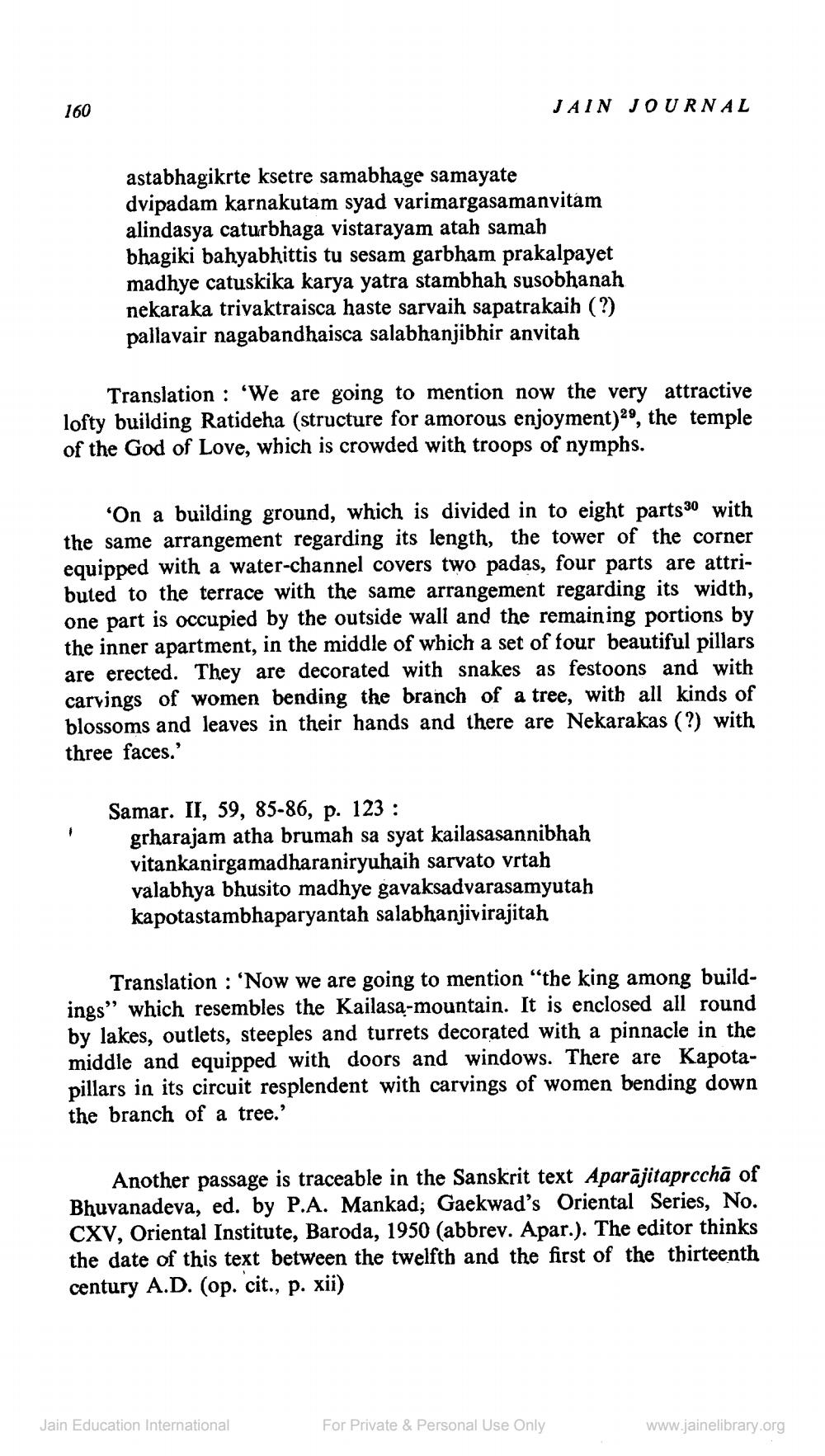________________
160
astabhagikrte ksetre samabhage samayate dvipadam karnakutam syad varimargasamanvitam alindasya caturbhaga vistarayam atah samah bhagiki bahyabhittis tu sesam garbham prakalpayet madhye catuskika karya yatra stambhah susobhanah nekaraka trivaktraisca haste sarvaih sapatrakaih (?) pallavair nagabandhaisca salabhanjibhir anvitah
JAIN JOURNAL
Translation: 'We are going to mention now the very attractive lofty building Ratideha (structure for amorous enjoyment)29, the temple of the God of Love, which is crowded with troops of nymphs.
'On a building ground, which is divided in to eight parts 30 with the same arrangement regarding its length, the tower of the corner equipped with a water-channel covers two padas, four parts are attributed to the terrace with the same arrangement regarding its width, one part is occupied by the outside wall and the remaining portions by the inner apartment, in the middle of which a set of four beautiful pillars are erected. They are decorated with snakes as festoons and with carvings of women bending the branch of a tree, with all kinds of blossoms and leaves in their hands and there are Nekarakas (?) with three faces."
Samar. II, 59, 85-86, p. 123:
grharajam atha brumah sa syat kailasasannibhah vitankanirgamadharaniryuhaih sarvato vrtah valabhya bhusito madhye gavaksadvarasamyutah kapotastambhaparyantah salabhanjivirajitah
Translation: 'Now we are going to mention "the king among buildings" which resembles the Kailasa-mountain. It is enclosed all round by lakes, outlets, steeples and turrets decorated with a pinnacle in the middle and equipped with doors and windows. There are Kapotapillars in its circuit resplendent with carvings of women bending down the branch of a tree.'
Another passage is traceable in the Sanskrit text Aparajitaprccha of Bhuvanadeva, ed. by P.A. Mankad; Gaekwad's Oriental Series, No. CXV, Oriental Institute, Baroda, 1950 (abbrev. Apar.). The editor thinks the date of this text between the twelfth and the first of the thirteenth century A.D. (op. cit., p. xii)
Jain Education International
For Private & Personal Use Only
www.jainelibrary.org




